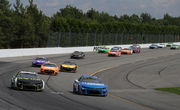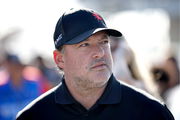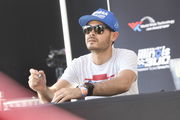

For decades, NASCAR has amazed audiences with its track action, drama, intense rivalries, and deep-rooted connection to American culture. From its humble beginnings in the world of moonshining to becoming a billion-dollar sport, the rise of NASCAR is an example of passion materializing in the audience. By the early 2000s, NASCAR had reached its peak in television viewership, drawing an average of 9 million viewers per race.
The 2006 Daytona 500, for instance, pulled in 19.4 million viewers, making it one of the most-watched editions in its history. However, none of this would have been possible without a critical moment in 1960, the first-ever live television broadcast of a NASCAR race. On January 31, 1960, CBS aired a 10-lap Daytona 500 qualifying race, marking the first time millions of Americans got to experience stock car racing from their living rooms. That moment, featuring Walter Cronkite as the announcer and Cotton Owens taking the win, changed the trajectory of NASCAR forever.
ADVERTISEMENT
Article continues below this ad
The race that launched the Golden Era for NASCAR
In the late 1940s, stock car racing had begun organizing itself under Bill France Sr.’s vision for a structured championship. NASCAR was officially founded in 1948, and by the late 1950s, it had developed into a thriving motorsport, yet it was still regional in popularity. France saw television as an untapped opportunity to introduce NASCAR to a broader audience.
The 1960 Daytona 500 was already shaping up to be a major event, following the success of the inaugural race in 1959, where Lee Petty won after a controversial photo finish. However, a key moment leading up to it was the 10-lap qualifying race, which CBS decided to broadcast live on January 31, 1960. This decision marked a historic first in NASCAR history, as an estimated 17 million viewers tuned in to watch the action in real time.
The broadcast was led by Walter Cronkite, a legendary journalist who was more associated with news than sports at the time. Despite his limited knowledge of racing, his commentary gave credibility to NASCAR as a mainstream sport. The race itself was won by Cotton Owens, who executed a perfect slingshot pass on the final lap to secure the pole position for the Daytona 500.
January 31, 1960: The FIRST live TV broadcast of a NASCAR race
From Daytona, aired on CBS with Walter Cronkite as announcer, Cotton Owens won a 10 lap qualifying race with a last lap slingshot pass to give him the pole for the Daytona 500
An estimated 17 million people watched pic.twitter.com/7Y1stRLjl7
— nascarman (@nascarman_rr) January 31, 2025
NASCAR and CBS marketed the event as a ‘never seen before’ experience, capitalizing on the growing popularity of television as a medium for live sports. This broadcast provided NASCAR with an opportunity to reach an audience far beyond the traditional south-Eastern Coast fan base. The success of the first live NASCAR broadcast gave the sport momentum. NASCAR quickly realized the power of television and began negotiating more broadcast deals, ensuring that future races would be aired nationwide
What’s your perspective on:
Did the 1960 broadcast truly ignite NASCAR's golden era, or was it just perfect timing?
Have an interesting take?
The successful pilot run of the qualification gave CBS the confidence to air the first-ever Daytona 500 on Valentine’s Day of 1960. The race called by Bud Palmer became an instant hit, which confirmed NASCAR’s inception in the sports market. Although they didn’t get to televise the race in 1961, this exposure increased fan interest and eventually caught the attention of major sponsors looking to advertise their brands to NASCAR’s rapidly growing audience.
During the 1970s, NASCAR experienced a boom in popularity, thanks in part to television, but also due to the rise of legendary drivers such as Richard Petty, David Pearson, and Cale Yarborough. Petty, in particular, became NASCAR’s first true superstar, winning 7 cups and bringing a new level of recognition to the sport.
Sponsorships began pouring in, helping teams and the sport grow financially. R.J. Reynolds’ Winston brand became the title sponsor of NASCAR’s top series in 1971, renaming it the Winston Cup Series. This sponsorship injected millions of dollars into NASCAR, allowing it to expand beyond the Southeast and into new markets across the United States. By the late 1970s and early 1980s, NASCAR had become a staple of American sports culture.
TV ratings also skyrocketed. The 1979 Daytona 500, became the first flag-to-flag live broadcast of the race, reaching an estimated 16 million viewers. That race, which ended in a dramatic last-lap crash between Donnie Allison and Cale Yarborough, was followed by an on-track fistfight that cemented NASCAR’s place in mainstream entertainment.
Merchandise sales grew exponentially as well, with companies like STP, Wrangler, and Coca-Cola using NASCAR’s appeal to market their products. The rise of NASCAR in the 1970s and 1980s was directly linked to the visibility television provided, and all of it traced back to that first live broadcast in 1960. But, there was a sport that battled NASCAR for viewership.
Trending
The Super Bowl and the battle for America’s flagship event
Ironically, NASCAR’s major step into live television broadcasting predated the Super Bowl by seven years. The first Super Bowl was held in 1967, featuring a matchup between the Green Bay Packers and the Kansas City Chiefs. Despite its now iconic status, the inaugural Super Bowl drew around 51 million viewers, significantly less than modern-day numbers.
ADVERTISEMENT
Article continues below this ad
Throughout the 1970s and 1980s, the Super Bowl grew into the single biggest sporting event in America. The combination of elite football, halftime shows, and massive advertising campaigns helped turn it into a cultural phenomenon.
However, for years, the Daytona 500 served as NASCAR’s version of the Super Bowl, drawing enormous TV audiences and making its race winners household names. For example, in 2006, the Daytona 500 attracted 19.4 million viewers, which wasn’t far off from Super Bowl XLI’s 93 million viewers in terms of addressable market. NASCAR even scheduled the Daytona 500 as the first race of the season, giving it a sort of Super Bowl anticipation factor.
As the Super Bowl became the definitive American sports event, NASCAR found ways to align itself with its success. The sport capitalized on cross-promotions with NFL stars, securing commercial spots during the big game, and even collaborating on marketing efforts with major networks like Fox, which broadcasted both events.
ADVERTISEMENT
Article continues below this ad
While NASCAR may no longer compete directly with the Super Bowl in terms of viewership, the early connection between stock car racing and live television helped pave the way for today’s sports media landscape. Without that January 31, 1960 broadcast, NASCAR might never have become the billion-dollar industry it is today.
ADVERTISEMENT
ADVERTISEMENT
ADVERTISEMENT
ADVERTISEMENT







Did the 1960 broadcast truly ignite NASCAR's golden era, or was it just perfect timing?